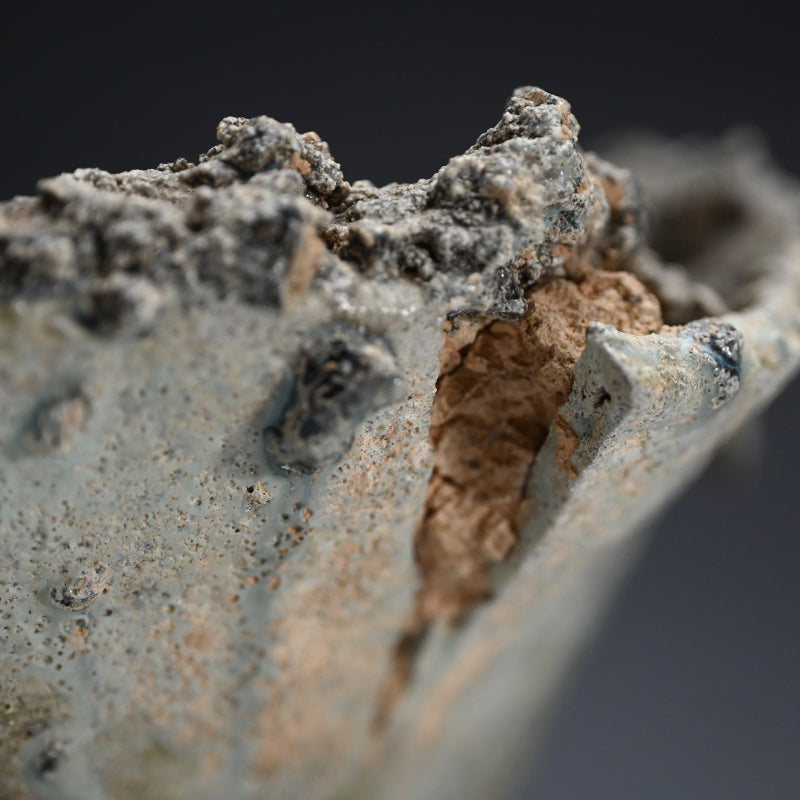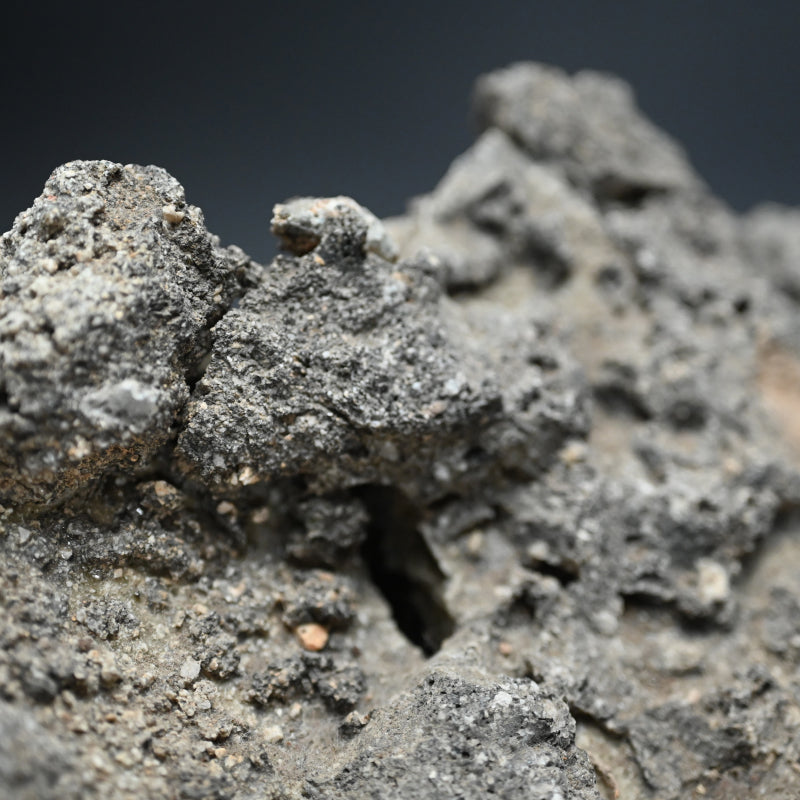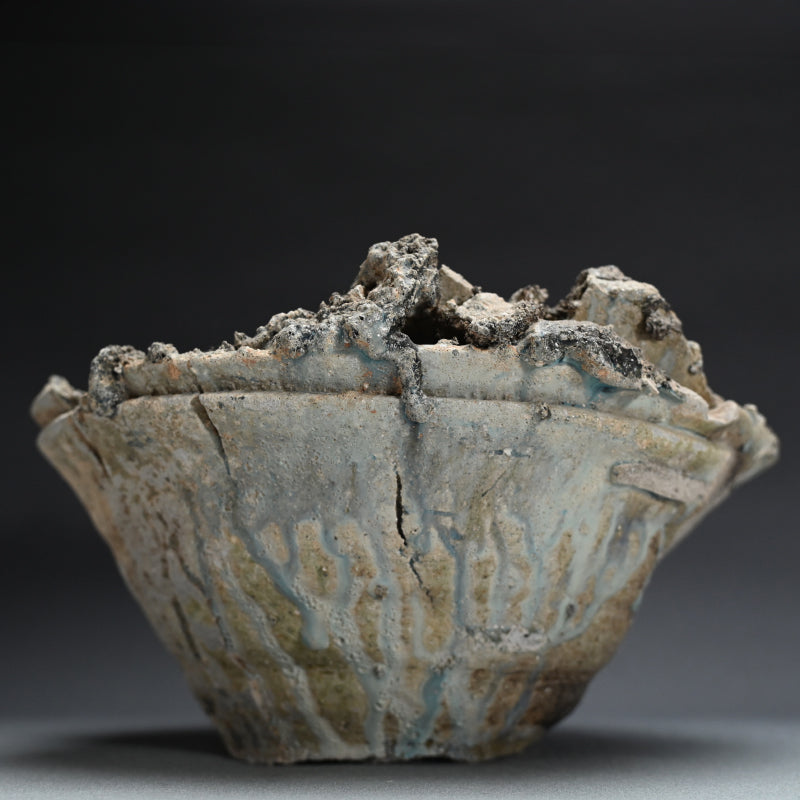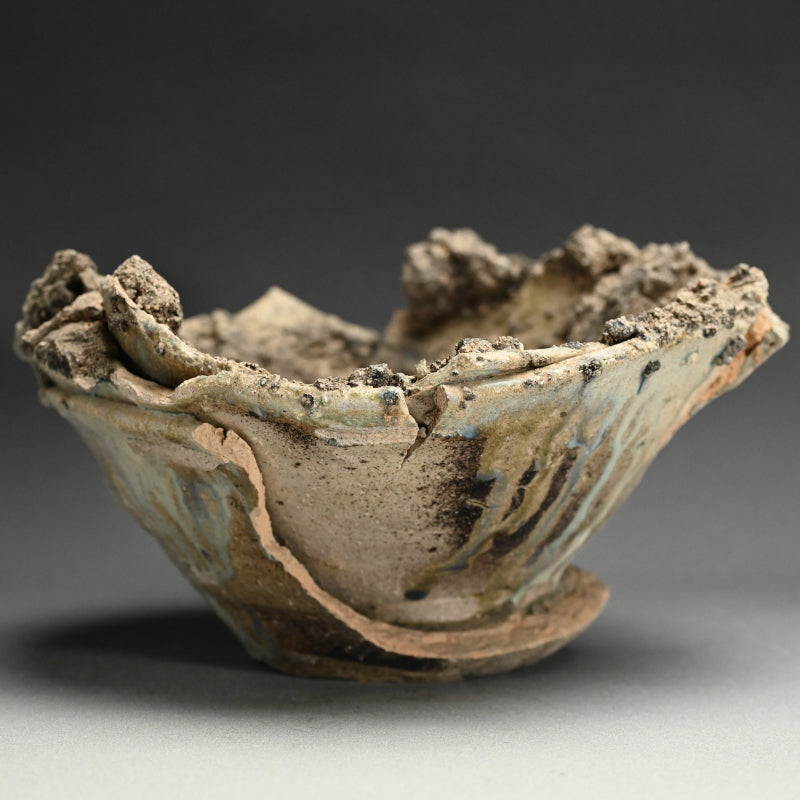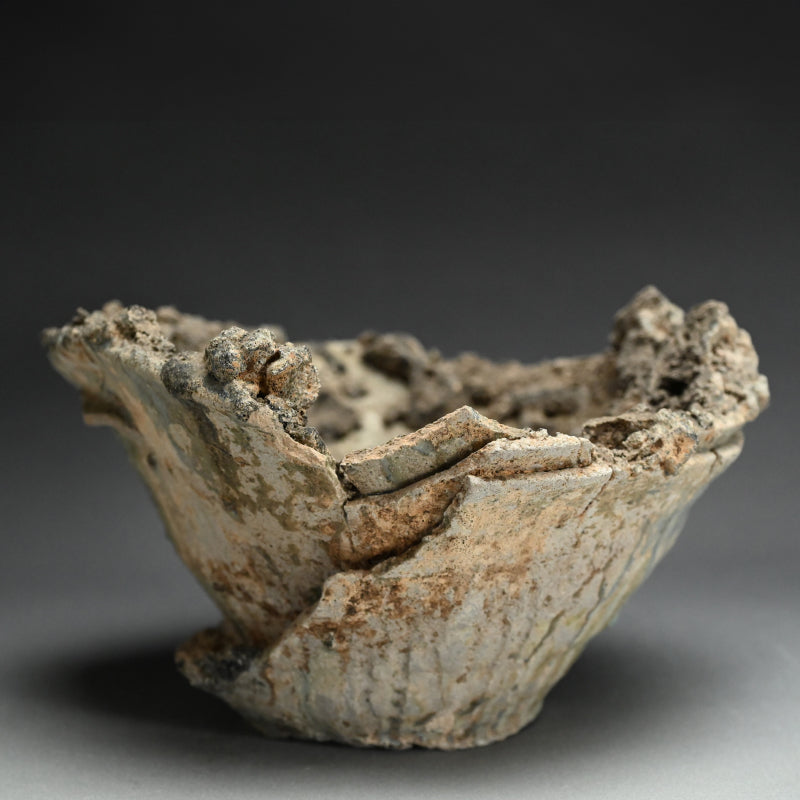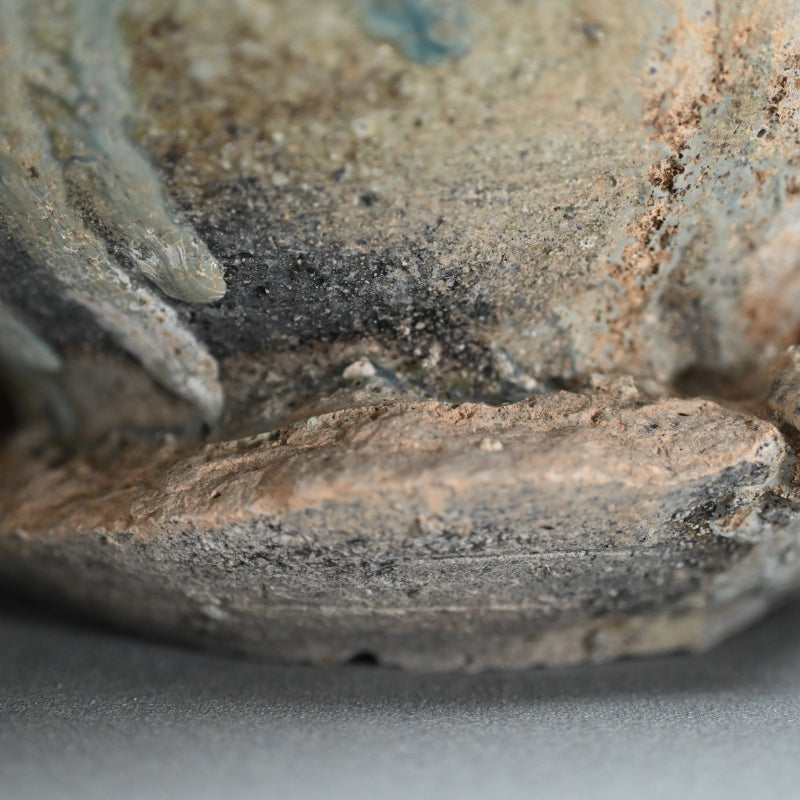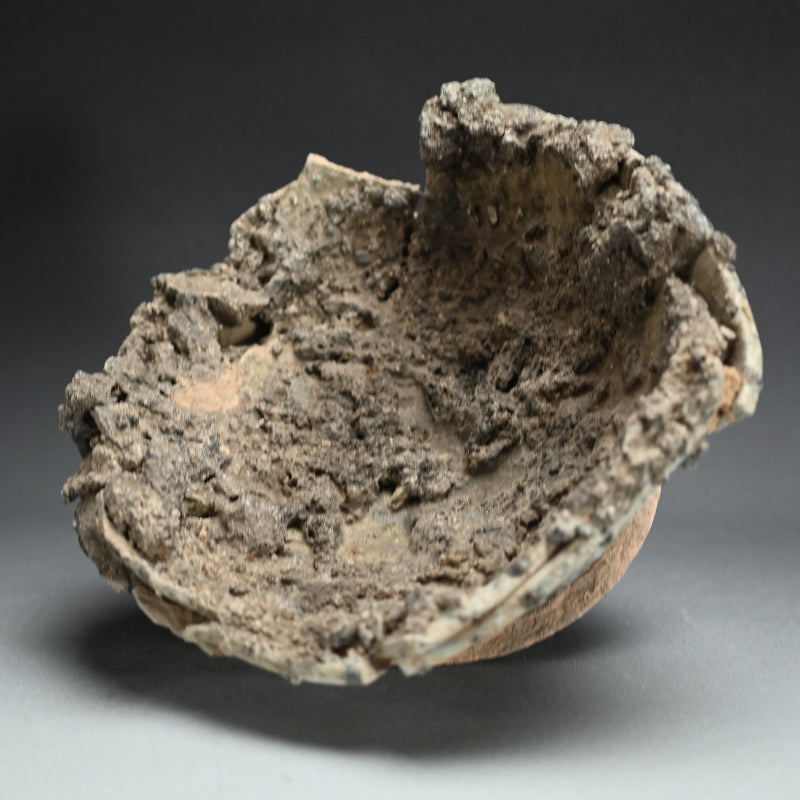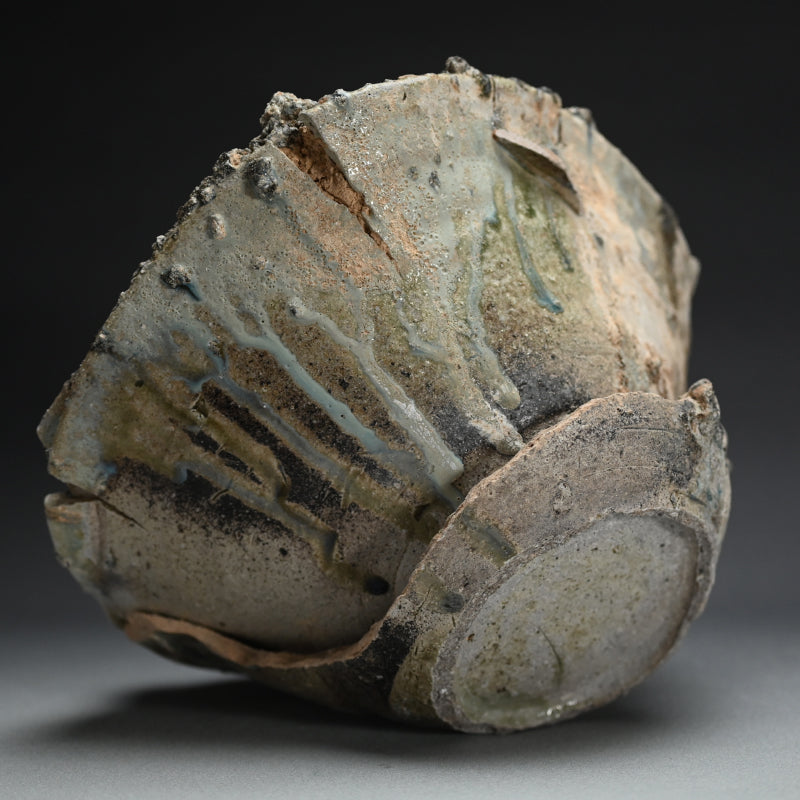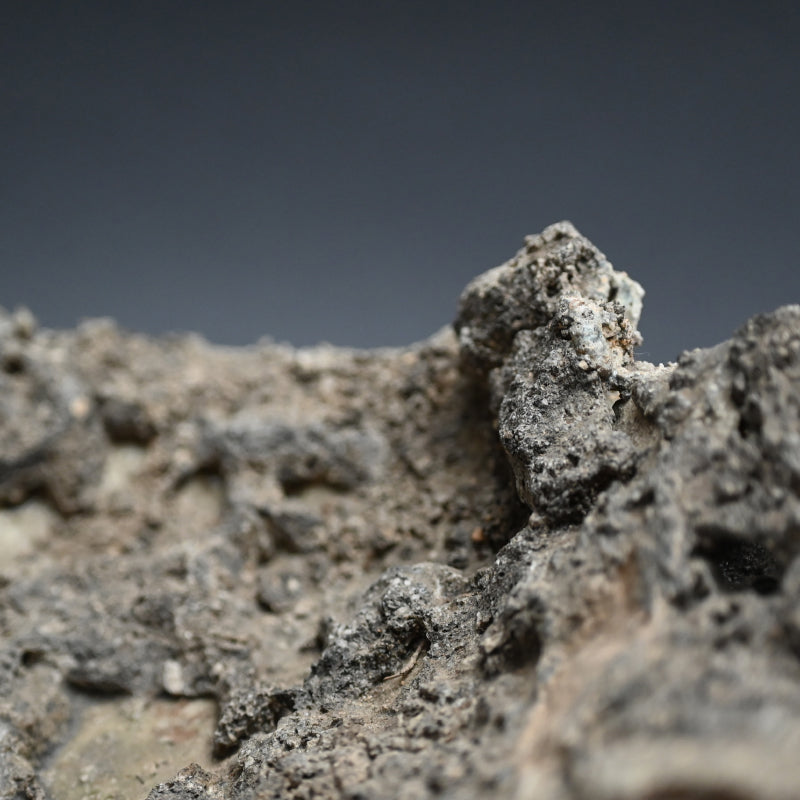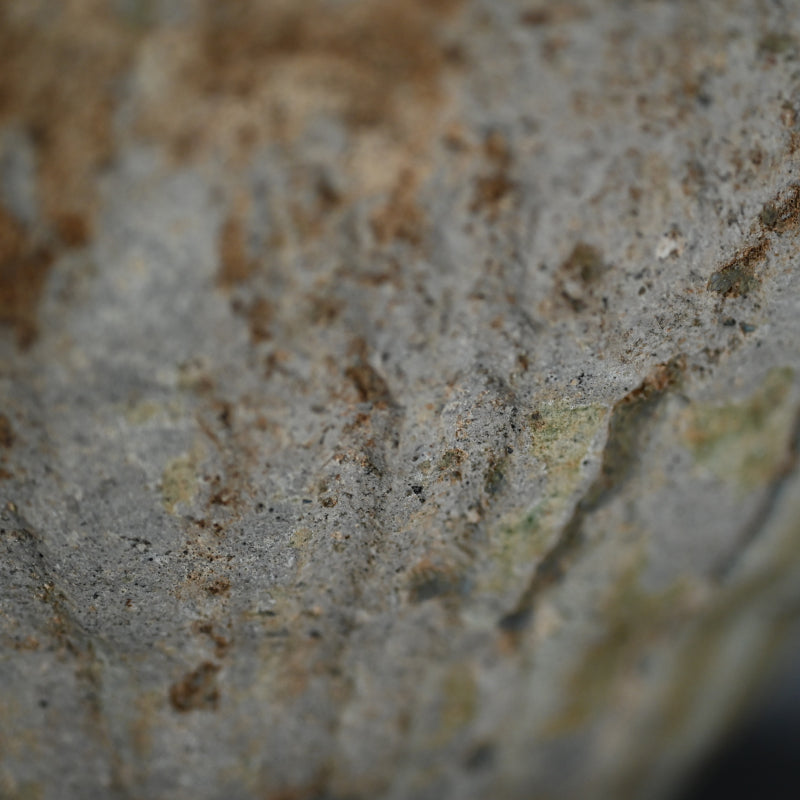1
/
of
13
Collapsed Shigaraki Tsubo, Muromachi Period ー古信楽割れ壺
Collapsed Shigaraki Tsubo, Muromachi Period ー古信楽割れ壺
Item Code: K730
Regular price
¥497,200 JPY
Regular price
Sale price
¥497,200 JPY
Unit price
/
per
Tax included.
Since this product is an oversized item that requires custom shipping, please send us a message with the delivery address and we will come back to you with a shipping quote.
Contact form
An incredible kiln flaw from the early kilns of Shigaraki showing still a very Tokoname style rim entirely sunken into the center of the pot where it collapsed nearly straight down on itself. Looking like a stack of pancakes from the side. Kutsuki from another pot show where something else collapsed and adhered to it during the firing. A look at the bottom reveals this process, seeing how the base has been pushed and rolled to the side. The shape of this work is indicative of early Shigaraki ware, when the influence of Tokoname pottery permeated all of Japan. It is 39 x 35 x 10 cm (15-1/2 x 14 x 4 inches).
Shigaraki, one of Japan's Six Ancient Kilns, has a rich history that dates back to the 8th century. Its origins are often linked to the construction of tiles for Emperor Shōmu's Shigaraki-no-miya Palace around 742 AD. However, archaeological evidence indicates that significant pottery production in Shigaraki began during the Kamakura period (1185–1333), with kiln remains suggesting that potters from other regions, such as Bizen, may have influenced early Shigaraki ware. Tokoname, another of the Six Ancient Kilns, had established its ceramic production techniques earlier and, in turn, influenced emerging pottery centers like Shigaraki. The influence of Tokoname ware on early Shigaraki pottery is notable. This early cross-regional interaction contributed to the development of Shigaraki as a pottery center close to the ancient capital distinctive pottery styles. The natural resources of the Shigaraki region also played a crucial role in shaping its pottery. The area's unique clay, rich in feldspar and other minerals, was well-suited for ceramic production. This clay allowed Shigaraki potters to create a pottery tradition characterized by warm, earthy tones and natural ash glazes, which have become hallmarks of Shigaraki ware.
Shigaraki, one of Japan's Six Ancient Kilns, has a rich history that dates back to the 8th century. Its origins are often linked to the construction of tiles for Emperor Shōmu's Shigaraki-no-miya Palace around 742 AD. However, archaeological evidence indicates that significant pottery production in Shigaraki began during the Kamakura period (1185–1333), with kiln remains suggesting that potters from other regions, such as Bizen, may have influenced early Shigaraki ware. Tokoname, another of the Six Ancient Kilns, had established its ceramic production techniques earlier and, in turn, influenced emerging pottery centers like Shigaraki. The influence of Tokoname ware on early Shigaraki pottery is notable. This early cross-regional interaction contributed to the development of Shigaraki as a pottery center close to the ancient capital distinctive pottery styles. The natural resources of the Shigaraki region also played a crucial role in shaping its pottery. The area's unique clay, rich in feldspar and other minerals, was well-suited for ceramic production. This clay allowed Shigaraki potters to create a pottery tradition characterized by warm, earthy tones and natural ash glazes, which have become hallmarks of Shigaraki ware.
Share

